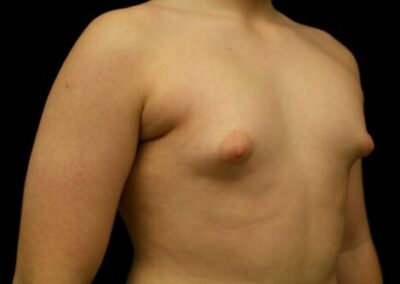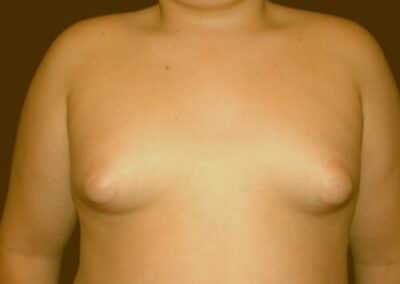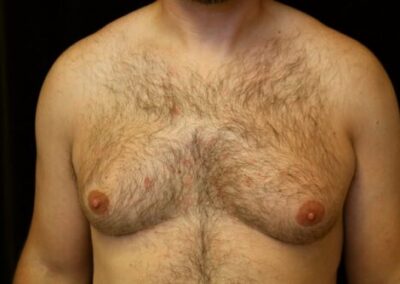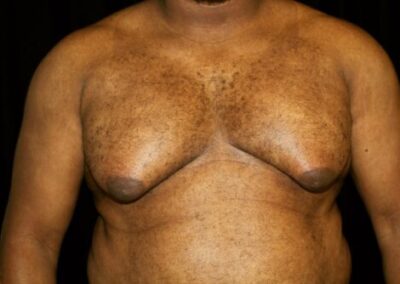Contact Us
 Dr. Delgado is a highly skilled surgeon specializing in gynecomastia surgery. Dr. Delgado has committed a significant amount of his practice to the care and education of men and boys with gynecomastia. Dr. Delgado’s practice philosophy is to provide the highest quality of patient care to the people who seek out his professional services. Dr. Delgado and his staff are committed to understanding their patients' concerns, educating them on their options, and executing the best surgical outcome for each patient. Dr. Delgado is the new owner of Gynecomastia.org since 2010. He has dedicated a significant part of his life and practice to improving the Gynecomastia.org community.
Dr. Delgado is a highly skilled surgeon specializing in gynecomastia surgery. Dr. Delgado has committed a significant amount of his practice to the care and education of men and boys with gynecomastia. Dr. Delgado’s practice philosophy is to provide the highest quality of patient care to the people who seek out his professional services. Dr. Delgado and his staff are committed to understanding their patients' concerns, educating them on their options, and executing the best surgical outcome for each patient. Dr. Delgado is the new owner of Gynecomastia.org since 2010. He has dedicated a significant part of his life and practice to improving the Gynecomastia.org community.
Other Terms for Gynecomastia
There are many terms for gynecomastia in the public domain. Although gynecomastia is the most common, the second most common is “man-boobs” or “moobs.” Muscle builders that use anabolic steroids often develop gynecomastia symptoms and sometimes refer to male breasts as “bitch tits”.
Gynecomastia surgery or male breast reduction surgery is the fastest and most effective way to get rid of enlarged male breasts.
Gynecomastia Causes
Gynecomastia has a wide range of causes. In many cases, the cause is a benign change in hormone levels, which can happen during puberty, later in life, or as a result of various types of illness and disease. When hormone levels are not balanced, gynecomastia can result due to levels of the female hormone (estrogen) being elevated.
Other gynecomastia causes for enlarged male breasts include certain medicines associated with gynecomastia symptoms, such as antidepressants and antibiotics. Research has indicated that a number of different illegal drugs, such as anabolic steroids, marijuana, or heroin, may also cause gynecomastia symptoms to develop.
Symptoms of gynecomastia are not always diagnosed as “true” gynecomastia. Another form of gynecomastia is pseudogynecomastia. It is important to understand the difference between true gynecomastia vs. pseudogynecomastia and the different options for treating each condition.
True Gynecomastia
With true gynecomastia, enlarged breasts in men are a result of the development of breast tissue similar to that found in female breasts. It is often firm and, at times, tender. On some occasions, the breast gland can even secrete a fluid similar to breast milk. The only recognized solution for true gynecomastia symptoms is male breast reduction surgery.
Symptoms of True Gynecomastia
The symptoms of true gynecomastia are different from pseudogynecomastia symptoms. Common symptoms of true gynecomastia include:
- Puffy nipples and enlarged areolas
- A firm lump of glandular tissue underneath the nipple
- Breast tenderness and pain
- Nipple discharge (this is rare)
Pseudogynecomastia

Pseudogynecomastia
Pseudogynecomastia is due to an accumulation of fat in the chest area. It is sometimes referred to as “fake gynecomastia” and is often seen in overweight males. The chest size is usually proportional to the rest of the body and will fluctuate with weight gain and loss.
Enlarged breasts in men that result from pseudogynecomastia may appear similar to true gynecomastia. This condition can carry the same social stigma as true gynecomastia and should not be dismissed. In obese men, a large belly with excess body weight can be socially acceptable, but for many overweight men, pseudogynecomastia presents a more significant, embarrassing problem.
Weight loss can help to reduce the size of enlarged male breasts caused by fatty tissue. Liposuction can offer a quicker and more reliable solution for men with pseudogynecomastia. It’s important to remember that men who undergo significant weight loss may struggle with excess skin that cannot go away with a better diet and exercise routine – plastic surgery procedures can help remove that excess skin for a firmer, flatter body contour.
Mixed Gynecomastia
Mixed gynecomastia is caused by a combination of glandular tissue and fatty tissue. Mixed gynecomastia is the most common type of gynecomastia. However, some males who are in good shape with low body fat can still present with a mass of glandular tissue. For the most part, this is an exception rather than the rule. The proper treatment for this condition is male breast reduction surgery.
Gynecomastia causes can be classified as either physiological or pathological. However, in many cases, the cause is unknown, or idiopathic gynecomastia.
The term physiological refers to the hormone changes in the body. Estrogen (female hormones) and testosterone (male hormones) work together in combination. There is a delicate balance between the two, and an imbalance of hormones can cause male breast tissue to develop in men.
Pathological gynecomastia refers to the relationship between testosterone deficiency and higher levels of estrogen. Both conditions can be related to diseases associated with hormone abnormalities, various tumors, chronic diseases, chromosomal abnormalities, and familial disorders.
Physiologic Causes of Gynecomastia
Physiologic gynecomastia is caused by male hormone changes, resulting in an imbalance between estrogen and testosterone. The most common type of physiologic gynecomastia is adolescent gynecomastia, sometimes referred to as pubertal gynecomastia or teen gynecomastia, and occurs between 10 and 16 years old.
The incidence, as per current research of adolescent gynecomastia, is 38%. Fortunately, approximately 75% of gynecomastia symptoms in adolescents resolve in two years, and 90% resolve within three years of onset. When adolescent gynecomastia does not resolve, this is termed persistent adolescent gynecomastia, which might require male breast reduction surgery for long-lasting improvement.
Pathological/Medical Causes of Gynecomastia
Pathological gynecomastia may be a result of medical conditions that lead to breast tissue enlargement. Some of the more common medical causes of gynecomastia symptoms include:
- Hypogonadism – This health condition means the body does not produce an adequate amount of testosterone, the hormone responsible for male traits, such as body hair formation and muscle mass. Some men are born with hypogonadism, while others develop it later in life due to an infection or injury. Some types of male hypogonadism can be treated with testosterone replacement therapy.
- Klinefelter syndrome – This genetic condition is found in men who have XXY sex chromosomes and not the usual XY. This chromosomal abnormality occurs in one of every 500 males born. The characteristics of Klinefelter syndrome include small testicles, low production of testosterone, and infertility. Information and advice about this condition can be found at the Klinefelter Support Forum.
- Pituitary insufficiency – Hypopituitarism is a decrease in the secretion of one or more of the eight hormones produced by the pituitary gland. The signs and symptoms of pituitary insufficiency vary depending on which hormones are under-secreted. The result is low production of testosterone, which can cause gynecomastia.
- Pituitary tumors – Prolactin-producing tumors are the most common pituitary tumors. This tumor causes the overproduction of the hormone prolactin, a hormone that helps control sexual function. In men, prolactin-producing tumors may cause gynecomastia, erectile issues or impotence, infertility, reduced body hair, and a low sex drive.
- Other cancer tumors – Tumors of the testicles or adrenal glands can secrete hormones that alter the male-female hormone balance, resulting in male breast enlargement.
- Hyperthyroidism – This condition causes the increased production of thyroxine in the thyroid gland, which can result in male breast enlargement.
- Kidney failure – Approximately half the patients being treated with ongoing hemodialysis (kidney failure). will experience gynecomastia due to hormonal changes.
- Liver failure and cirrhosis – Liver disease and medications taken for cirrhosis are associated with gynecomastia symptoms.
- Malnutrition and starvation – Malnutrition causes testosterone levels to decrease, yet estrogen levels remain the same, resulting in a hormone imbalance and male breast tissue growth. Gynecomastia can occur even after a nutritionally adequate diet is restored.
- Male menopause – This is a condition that affects older men, usually over 60 years old. It has a set of symptoms tied to reduced testosterone levels and aging. Male menopause is also called andropause, a form of late-onset hypogonadism and low testosterone.
Men with gynecomastia are sometimes concerned about breast cancer. Male breast cancer is very rare and only accounts for 0.02% of all cancers in men. It is primarily seen in men over 60 years old. When gynecomastia surgery is performed, a sample of breast tissue is sent for analysis to check for cancer cells.
Gynecomastia Consultation from Gynecomastia.org
If you are concerned about gynecomastia, Dr. Miguel provides free virtual consultations for men who want to discuss male breast reduction surgery. Following a consultation, a full evaluation of your medical history will be made, and then you will need to attend Dr. Miguel’s office to have a proper physical exam. Often, this process is how nearly everyone gets their gynecomastia diagnosed. In the rare case no cause is determined, an endocrine or hormone workup will be the next step.
For personalized information about gynecomastia plastic surgery procedures, please complete Dr. Delgado’s inquiry form.
Gynecomastia.org does not provide medical advice, treatment, or diagnosis.
©Copyright 2020 Gynecomastia.org. All rights reserved. Use and access to this site are subject to the terms and conditions as set out in our Legal Statement and Privacy Statement.
The content on Gynecomastia.org is for educational purposes only. It is not intended as medical advice. It does not replace the need to meet with a physician who will accurately diagnose your condition and suggest treatment options.





